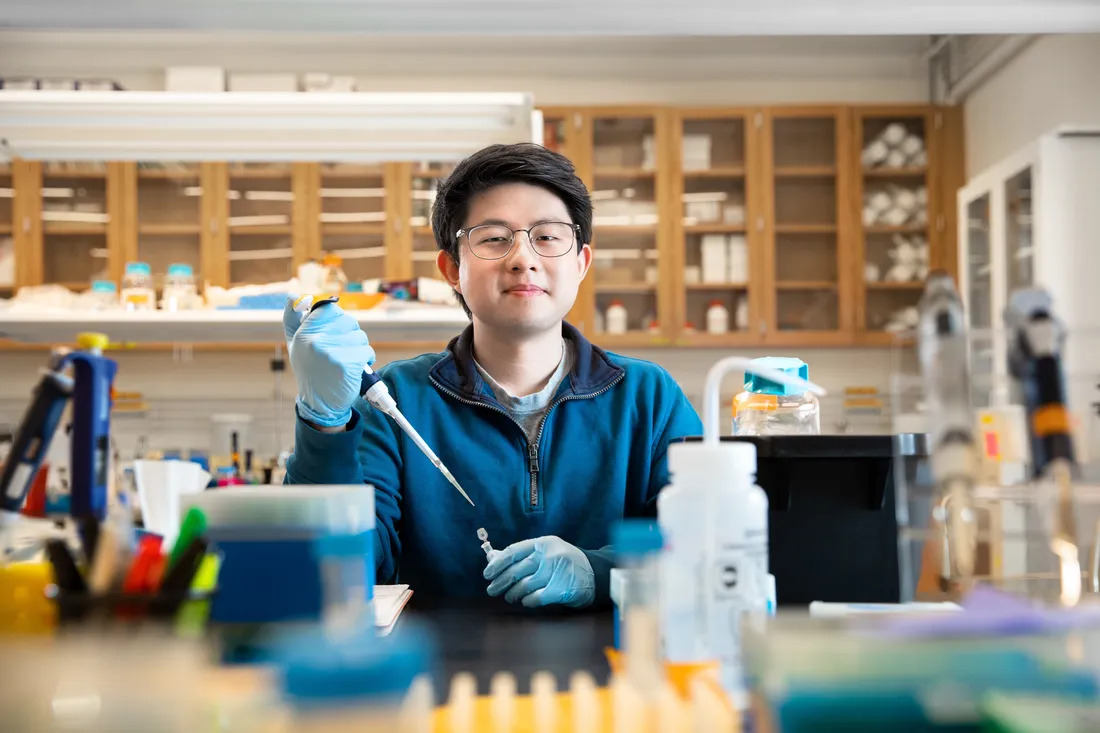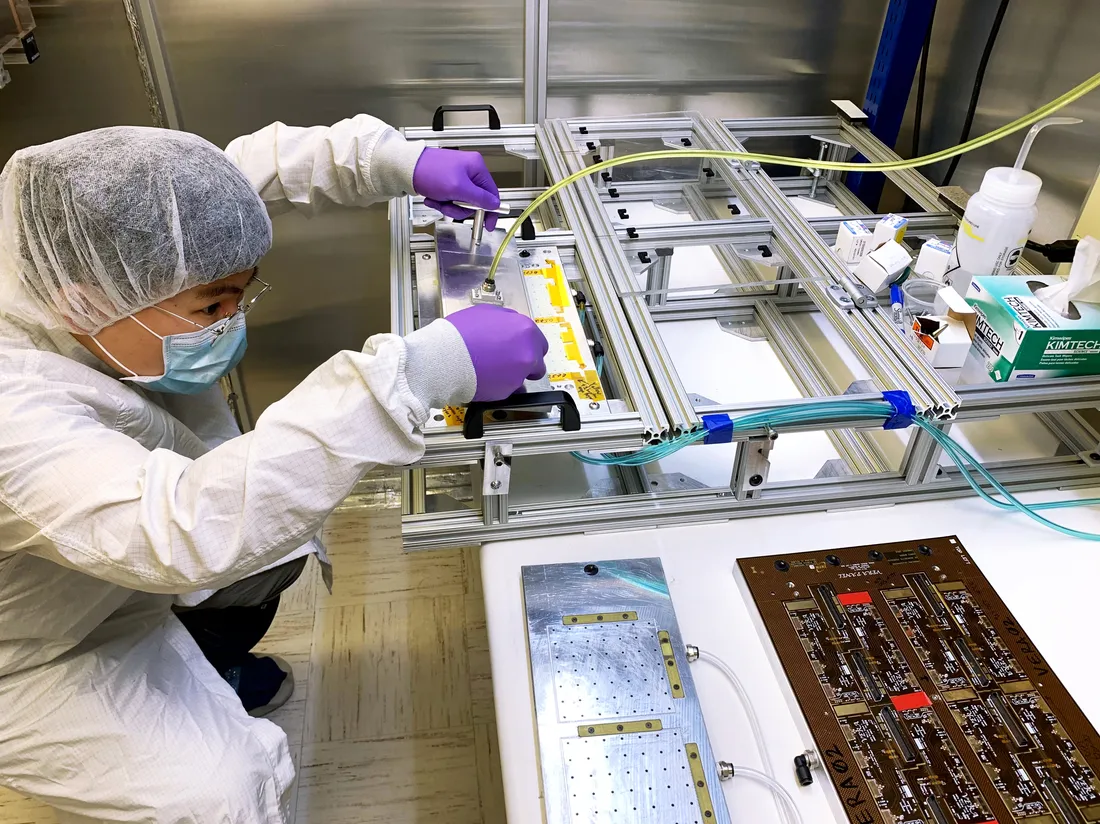
Postdoctoral researcher Hangyi Wu G’23 works on the Upstream Tracker, which is part of a multinational physics experiment in Geneva, Switzerland, called LHCb. The $7 million tracker was built primarily at Syracuse.
It didn’t take long—a fraction of a second—for the first atoms to appear in the universe’s Cosmic Soup. But it’s an even smaller blink of time, 13.7 billion years ago, that intrigues researchers at Syracuse University.
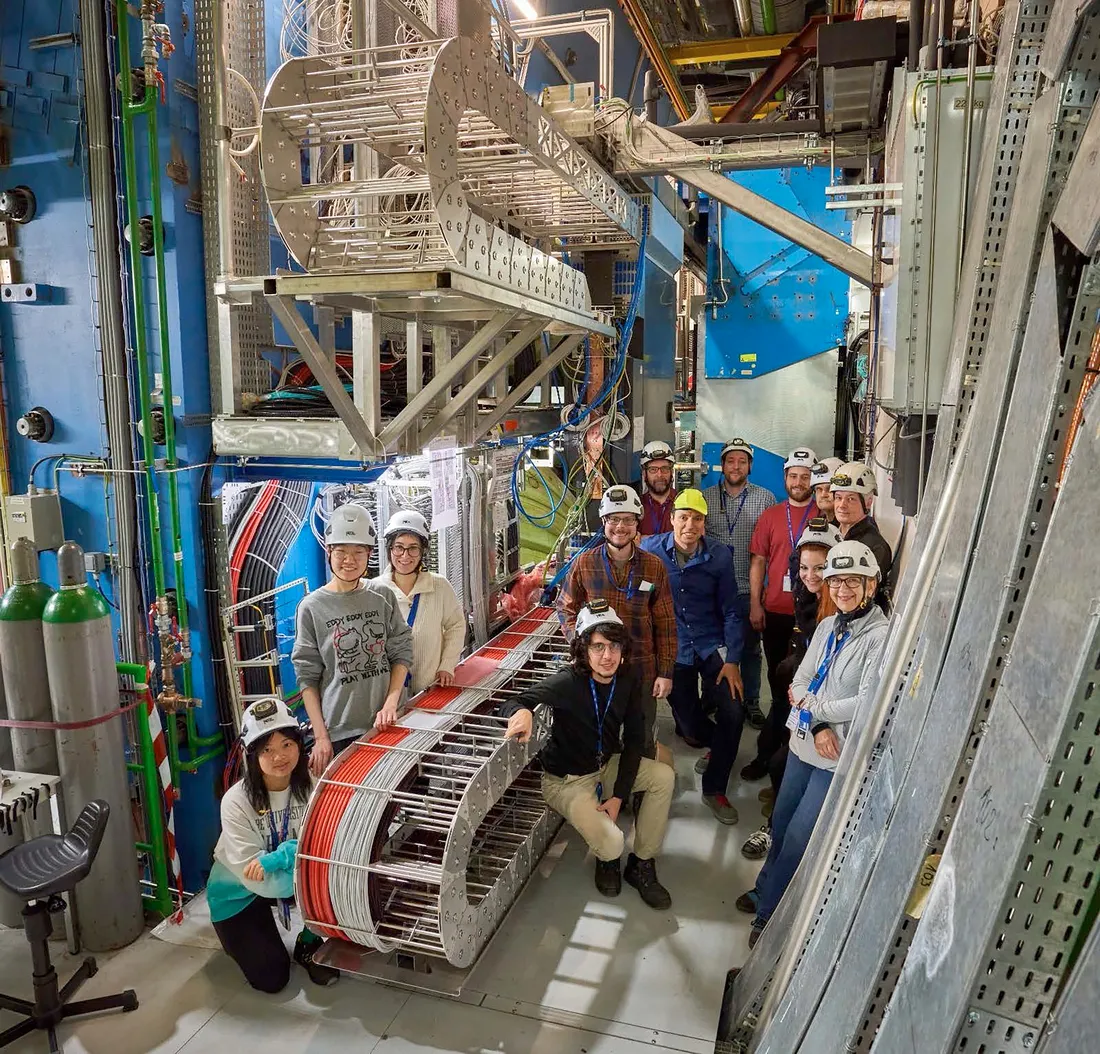
Professor Marina Artuso (far right) at CERN with postdoctoral researchers Elisa Minucci (third from left) and Dimitra Andreou (second from right). (Photo courtesy of Manuel Franco Sevilla, physics professor at the University of Maryland.)
Physics Professor Marina Artuso directs the High-Energy Physics group, which is part of a multinational experiment called LHCb. “LHC” refers to the Large Hadron Collider, the world’s biggest, most powerful particle accelerator, located at a laboratory called CERN in Geneva, Switzerland. “B” refers to exotic subatomic particles called beauty quarks, which, along with charm quarks, are the focus of the experiment.
LHCb has its roots in the Big Bang, immediately after which the universe was filled with a mixture of quarks and gluons. (Gluons are force-carrying particles that bind quarks together.) “Lighter quarks combined to form bound systems like protons and neutrons,” says Artuso, who joined the faculty of the College of Arts and Sciences in 1991. “These systems, in turn, eventually came together to make up the nucleus of every atom in the universe.”
According to Artuso, quarks are difficult to detect because they’re bound together inside heavier particles called hadrons. “For each quark, there’s a corresponding antiquark with the same mass but an opposite charge,” she says, noting that matter and antimatter pairs were originally in equal abundance. “Antimatter is now mostly absent, causing the universe to be unstable. It’s one of the puzzles that LHCb is trying to solve.”
A Flavor for Discovery
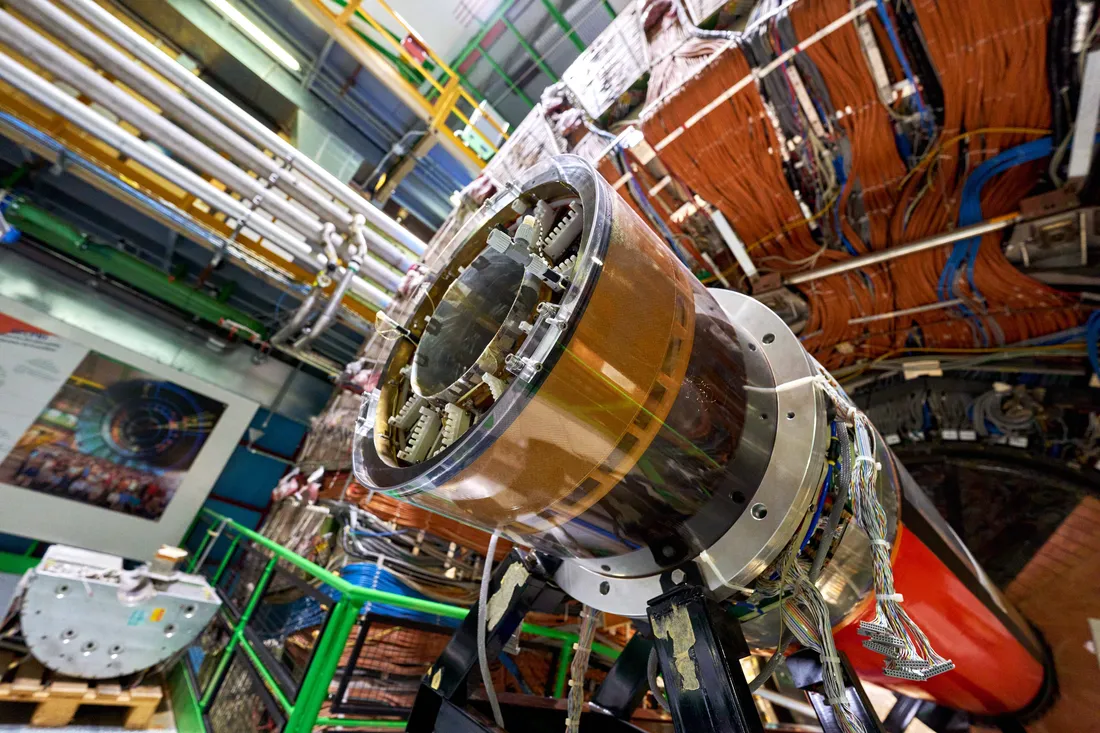
The Large Hadron Collider is the world’s biggest, most powerful particle accelerator. (Photo courtesy of CERN.)
Artuso collaborates with fellow professors Steven Blusk, Matthew Rudolph, Tomasz Skwarnicki and Rafael Silva Coutinho. Much of their work revolves around the Large Hadron Collider, a 17-mile-long, ring-shaped tunnel that recreates the first moments of the universe. The LHC smashes beams of protons together at close to the speed of light—about 40 million times per second—and with seven times the energy of other accelerators. Afterward, scientists comb through the debris looking for traces of subatomic matter.
Artuso studies the interesting properties of charm and beauty quarks, noting that there are a total of six kinds, or “flavors,” of quarks with different masses.
“LHC collisions generate billions of beauty quarks, along with their antimatter counterparts,” says the Italian-born physicist, who previously taught at Cornell and Columbia universities. “These particles might answer important questions about how the microworld works.”
What we do at Syracuse University—and at CERN—has societal implications. Our quest for knowledge connects us with the rest of the world.
Professor Marina Artuso
Artuso believes that particle decay—the process by which beauty quarks spontaneously transform into lighter particles—can explain why the universe is composed almost entirely of matter, instead of antimatter. “After the Big Bang, matter and antimatter particles constantly annihilated each other, only to be recreated in a tumultuous, ever-changing universe. Soon enough, only matter was left over for the universe to evolve,” she adds.
Perpetuating a Legacy
To help LHCb achieve unprecedented sensitivity, Artuso and others have spent the past decade designing, constructing and commissioning a special detector called the Upstream Tracker (UT). Much of the $7 million, federally funded project took place in Syracuse’s Physics Building, where Artuso has served as project leader. Fellow professors Ray Mountain, Blusk, Rudolph and Skwarnicki have also played key leadership roles, while postdoctoral research associates, graduate students and undergraduates have infused the project with creativity and devotion.
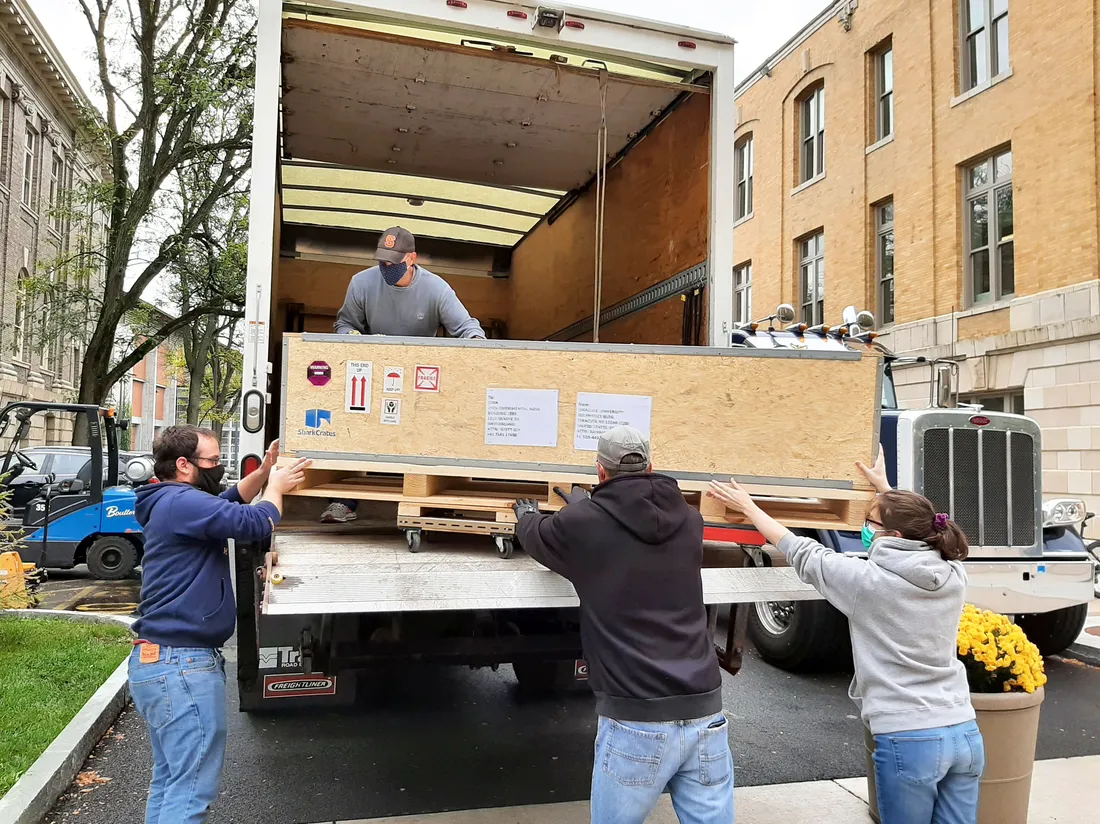
Workers load parts of the Upstream Tracker on to a delivery truck on campus. The detector observes and records the results of particle collisions at CERN.
One person who was instrumental to the UT but didn’t live to see its completion was Artuso’s husband, Distinguished Professor Sheldon Stone. Overseeing the tracker’s installation at CERN last winter was a requiem of sorts for him, she admits. “Sheldon’s passion for flavor physics and detector innovation is still an inspiration to us.”
The UT is integral to the upgrade of the LHCb experiment, which is currently being commissioned. Characterizing by Artuso as a “large, silicon microstrip device,” the UT will help scientists probe, with unprecedented precision, the Standard Model of elementary particles—a theoretical framework that makes detailed predictions of how particles interact with one another. “It also will open up vistas of unexpected observations, paving the way for physics beyond the Standard Model,” she says.
Illuminating Possibility
LHCb has acquired a vast body of knowledge, while opening new paths of inquiry. Some of these areas were unforeseen nine years ago, when the experiment’s to-do list was initially drawn up. “At this rate, the richness of knowledge we’ll acquire over the next few years will be mind-boggling,” opines Artuso, a 2007 Fellow of the prestigious American Physical Society and a 2022 recipient of Research.com’s “Best Female Scientist” award.
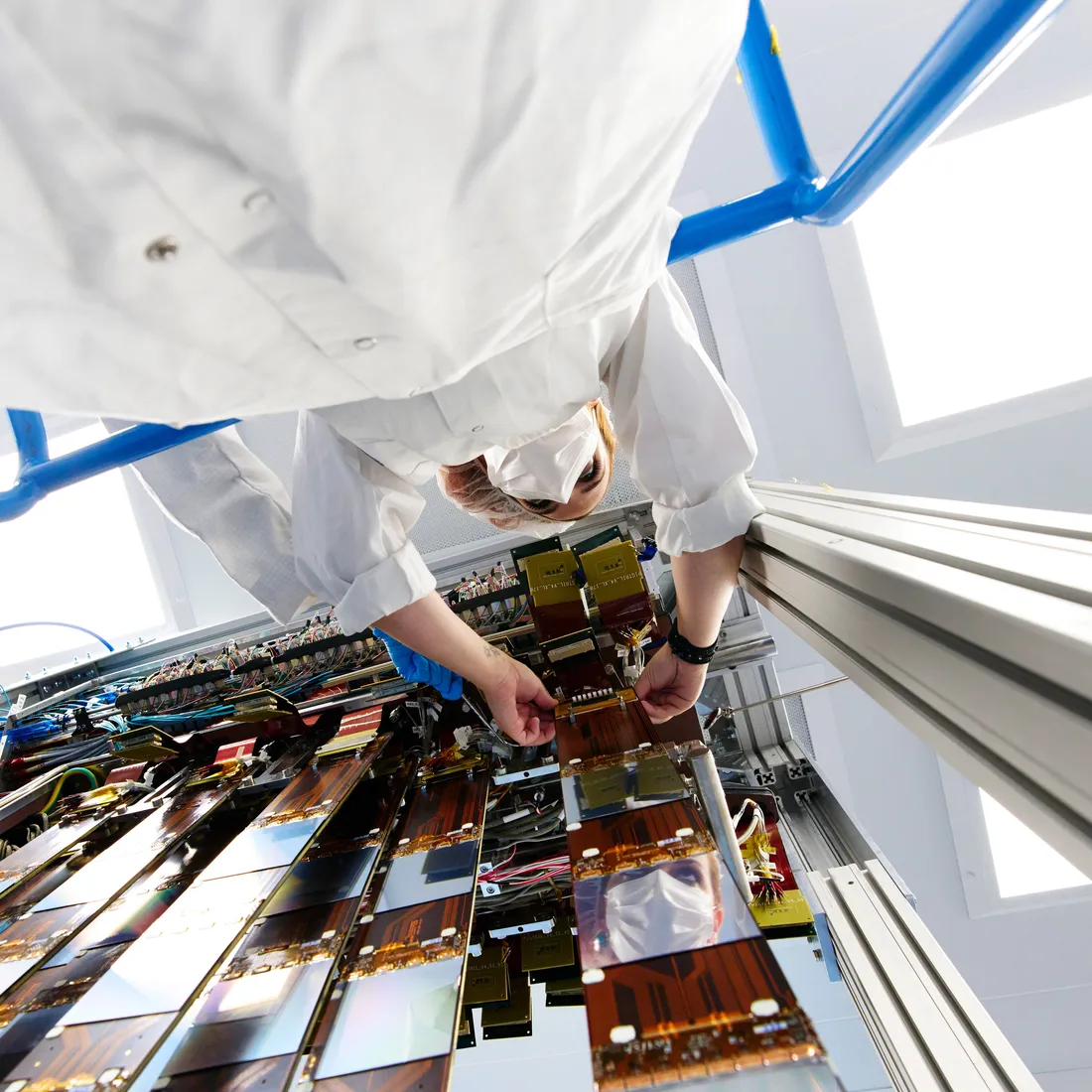
A scientist works on the Upstream Tracker in a clean room at CERN. (Photo courtesy of CERN.)
The UT is the pride of LHCb’s new tracking system, enabling the experiment to operate at five times more luminosity and accumulate an order of magnitude more data. “We’ll also be able to decide in real time if there’s useful data to pursue,” says Artuso, acknowledging the impact of high-speed data processing on high-energy physics.
She marvels at the applications of such research, drawing links between particle physics and breakthroughs in medicine, computing, industry and homeland security. “What we do at Syracuse University—and at CERN—has societal implications,” Artuso concludes. “Our quest for knowledge connects us with the rest of the world.”
What’s the Matter?
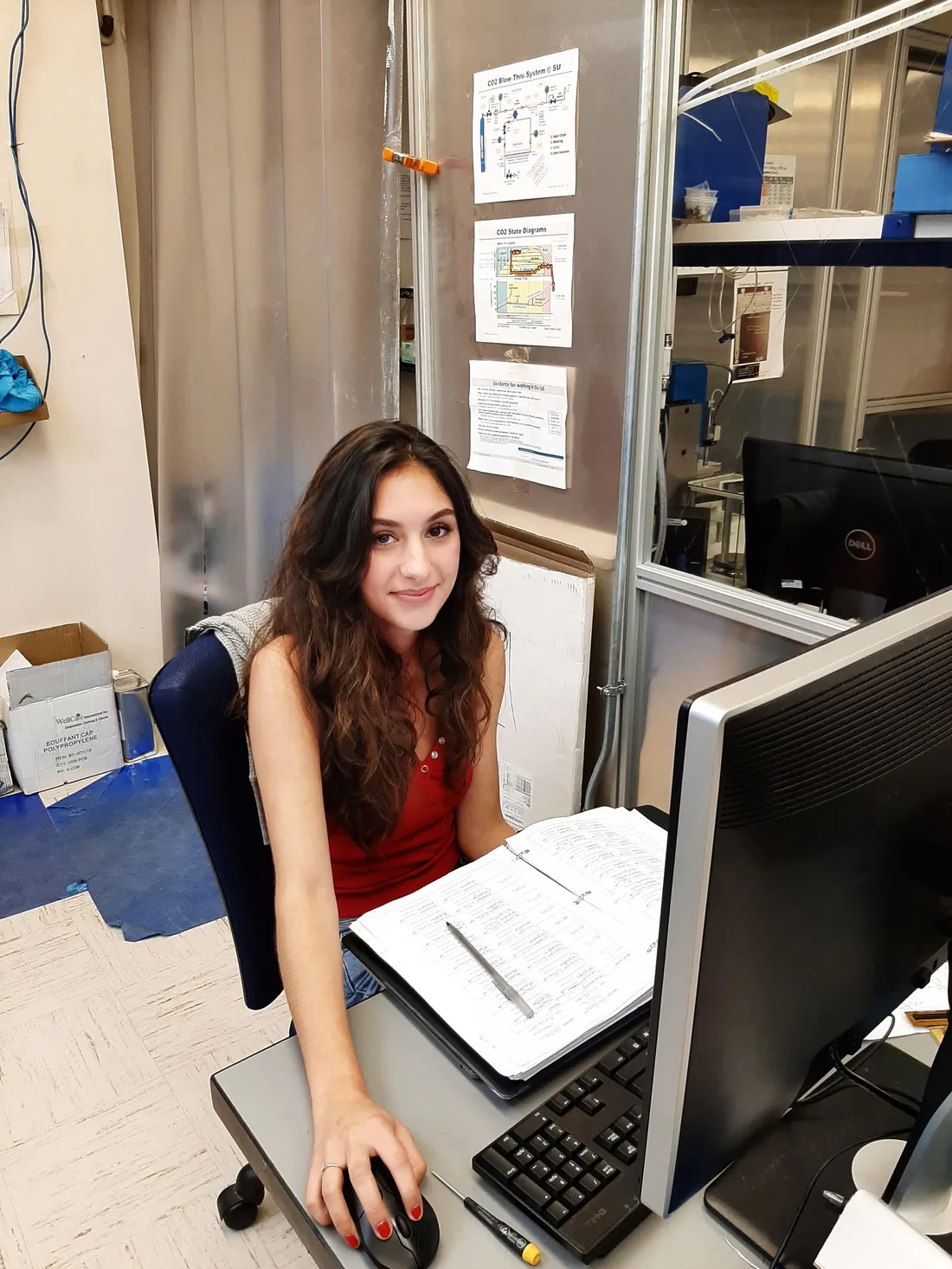
Danielle Germann ’21 has parlayed her Upstream Tracker experience into a post baccalaureate stint at CERN, followed by Ph.D. studies at Brown University.
Accelerator: A huge instrument, like CERN’s Large Hadron Collider, which boosts beams of particles to high energies before the beams collide with each other or with stationary targets.
Big Bang: The idea that the universe began as a single point, 13.7 billion years ago, and has continued to stretch and expand.
CERN: A large laboratory located on the Franco-Swiss border that uses the world’s biggest instruments to study the smallest units of matter. The name is an acronym derived from the French spelling of the “European Council for Nuclear Research.”
Detector: An instrument, like the Upstream Tracker, that observes and records the results of particle collisions.
Exotic: Refers to a subatomic particle with unusual properties, like a large mass.
Quark: An elementary particle, of which there are six kinds, or “flavors,” according to their mass and electrical charge. Quarks bind together to form protons and neutrons, which, in turn, are the building blocks of atomic nuclei.
Standard Model: A theoretical framework for how particles interact with one another.

